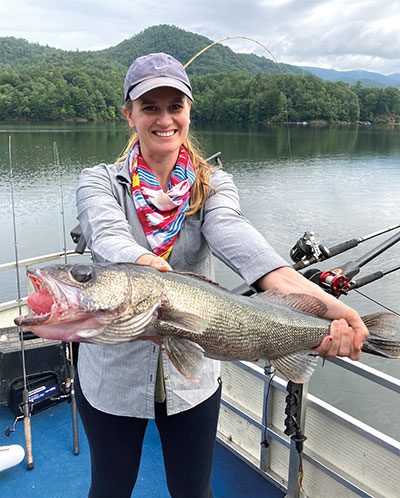Probably the one most important thing an angler can do to increase his or her fishing success is to learn where the species of fish you’re trying to catch are hanging out, whether feeding or just suspending. Our mountain lakes are huge and, if the truth be known, probably 80% of the fish at any one time will be located in 20% of the water in the lake you’re fishing. You can have the very best bait, the fastest boat, and give the most natural presentation to those fish but if you’re not where they can see it, you will just be wasting your time. I have often wondered if the fish were more comfortable locating in the thermocline in a lake or if that’s simply where the bait they are feeding on is and therefore, they are there to feed on them.
The thermocline, for anyone new to fishing, is the level in depth where, in the summer, the water is warmer on top and as you drop down, there will be a level where it will cool drastically and there will be more oxygen for bait and fish. Different species seem to react differently to it; walleye will usually be suspended under it, while bass, trout, and striper will cruise through and above it, while feeding. As far as finding it, all you need is good quality sonar. I run a Lowrance HDS and it will show up as a blue static layer across the screen. It can vary in thickness and can run different depths, depending on where you are located on the lake, be it in the headwaters or close to the dam. If your sonar is not showing it, increase the sensitivity level until you get a dirtier picture and it should show up. Threadfin shad are the primary food source in our mountain lakes, as of now, and the threadfin will almost always be close to the thermocline.
The blue back heron, that have established themselves in our lake, don’t seem to be so dependent on the thermocline and seem to be more scattered on the surface but that could be due to the fact that the threadfin are a little more temperature dependent. When fishing deep around the thermocline, don’t be surprised when you bring a fish in with its swim bladder blown out of its mouth, as with the walleye in the picture provided. I know there are tons of expert anglers that will disagree but I don’t think these fish can be released with a high ratio of survival. Some say they can be vented but I think this only gives the appearance of the fish living, since it will go deep when released and I just think it dies and the air is released from the swim bladder so it doesn’t float back to the surface. For this reason, I think it’s so important to not keep fishing after you get your limit of these deep fish, thinking you can safely release them. I hope everyone has weathered this Covid-19 scare and is getting to enjoy some cooler temps. I hope to see you on the water and, as always, take a kid fishing!
Ronnie Parris is owner and head guide of Smoky Mountain Outdoors Unlimited-Fontana Lake Fishing Guides, headquartered in Bryson City, N.C., heart of the Great Smoky Mountains
(www.smounlimited.com; (828) 488-9711).
